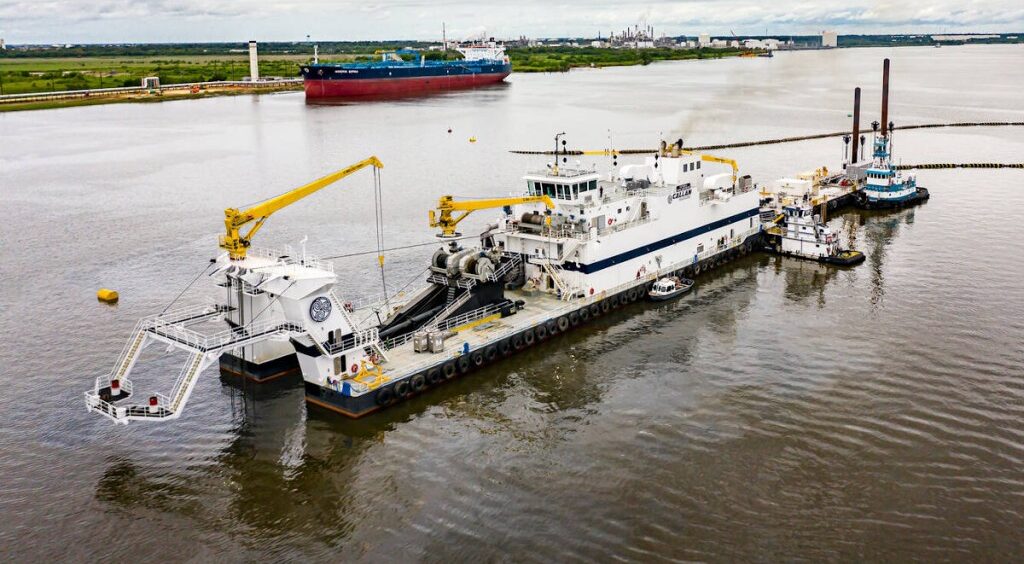The Initial Challenges: Excessive Sand Extraction
The Problem
In the initial phase of the project, the custom-built suction dredge faced a significant challenge: it extracted excessive amounts of sand along with the invasive seaweed. This problem arose from the dredge’s design, which was not adequately fine-tuned to differentiate between the targeted seaweed and the surrounding sediment.
Impact on Operations
The excessive sand extraction led to multiple issues:
- Reduced Efficiency: The dredge’s efficiency plummeted as it had to handle and process large volumes of sand, slowing down the overall operation.
- Increased Wear and Tear: The additional sand increased wear and tear on the dredge’s components, leading to more frequent maintenance and downtime.
- Environmental Concerns: Disturbing large amounts of sediment could negatively impact the local marine environment, potentially harming non-target species and habitats.
Identifying the Root Causes
To address these challenges, a thorough analysis was conducted to identify the root causes:
- Dredge Design: The design of the suction head and the separation mechanisms were not optimized for the specific conditions of the seabed.
- Operational Parameters: The operational parameters, such as suction power and flow rates, needed adjustment to better target the invasive seaweed.
- Environmental Conditions: Variations in sediment composition and seaweed density required a more adaptable and precise approach.
Redesigning the Suction Dredge
Engineering Solutions
The redesign of the suction dredge focused on several key areas to improve its performance and efficiency:
- Enhanced Suction Head Design: The suction head was redesigned to include adjustable intake screens and separators that could more effectively target the seaweed while minimizing sand intake.
- Variable Flow Control: Implementing variable flow control allowed for better management of suction power and sediment intake, reducing the amount of sand extracted.
- Advanced Monitoring Systems: Real-time monitoring systems were installed to provide data on sediment composition and dredge performance, enabling immediate adjustments as needed.
Implementation and Testing
The redesigned dredge underwent extensive testing to ensure its effectiveness:
- Pilot Trials: Initial pilot trials were conducted in controlled areas to fine-tune the new design and operational parameters.
- Feedback Loop: Continuous feedback from operators and environmental monitors was used to make iterative improvements to the dredge.
- Full-Scale Deployment: Once optimized, the redesigned dredge was deployed in the target areas for full-scale operations.
Dramatic Improvements in Efficiency
Achieving Operational Goals
The redesign of the suction dredge led to significant improvements in efficiency, enabling the project to achieve its operational goals:
- Increased Clearance Rate: The redesigned dredge could clear half a hectare of seabed per day, doubling the previous rate and later increasing this to a hectare daily.
- Reduced Downtime: Improved design and reduced wear and tear decreased maintenance needs and operational downtime.
- Enhanced Environmental Protection: The targeted approach minimized sediment disturbance and protected the surrounding marine environment.
Case Study: Operational Metrics
Before Redesign
- Seabed Cleared per Day: 0.25 hectares
- Maintenance Frequency: Every 2-3 days
- Sediment Disruption: High, with significant sand extraction
After Redesign
- Seabed Cleared per Day: 1 hectare
- Maintenance Frequency: Every 5-7 days
- Sediment Disruption: Low, with minimal sand extraction
Lessons Learned and Best Practices
Key Takeaways
- Design Optimization: Tailoring equipment design to specific environmental conditions is crucial for operational efficiency.
- Real-Time Monitoring: Implementing advanced monitoring systems allows for immediate adjustments and continuous improvement.
- Iterative Improvement: Continuous feedback and iterative redesign are essential for overcoming initial challenges and achieving project goals.
Recommendations for Future Projects
- Comprehensive Initial Assessment: Conduct thorough assessments of environmental conditions and operational requirements before deploying equipment.
- Flexible Design: Ensure equipment design is adaptable to varying conditions and can be easily modified based on real-time data.
- Stakeholder Collaboration: Engage with stakeholders, including environmental experts and local communities, to ensure project goals align with broader conservation efforts.
Conclusion
The case study of the custom-built suction dredge highlights the importance of adaptability and continuous improvement in marine eradication projects. By addressing initial challenges through innovative engineering solutions and real-time monitoring, the project achieved remarkable improvements in efficiency and environmental protection. These lessons and best practices provide valuable insights for future projects aimed at preserving marine ecosystems and promoting sustainable environmental management.
